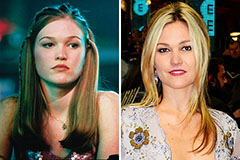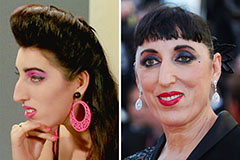Effective typography improves the readability and visual appeal of any written content. It's absolutely than just choosing appealing fonts; it involves a deep understanding of rules that govern the arrangement, size, design, and spacing of type. Mastering these principles empowers you to create clear text that effectively conveys your message and engages your audience.
- Think about the purpose of your writing and target audience when selecting fonts and typographic treatments.
- Combine different font styles and weights to create a compelling hierarchy.
- Use whitespace effectively to improve readability and lead the reader's eye.
By following these fundamental typography principles, you can elevate your writing from ordinary to extraordinary, making it both informative and visually pleasing.
Exploring Different Typefaces and Their Impact
Typography enhances a vital role in communication, shaping the way we understand text. From elegant serif fonts to modern sans-serifs, each typeface conveys unique characteristics that impact readability, tone, and overall aesthetic. Serif fonts, with their subtle flourishes, often evoke a sense of tradition and sophistication, while sans-serif fonts, known for their clean lines and minimalist style, tend to convey modernity and clarity.
- Choosing the right typeface should significantly enhance the effectiveness of your message, making it more engaging and remembered.
- For instance, a playful script font would be ideal for a children's book, while a bold sans-serif font might be more fitting for a corporate brand.
By exploring different typefaces and their impacts, you can create visually appealing and effective messages.
The Art of Layout: Designing with Text impactfully
Crafting captivating content is paramount, but its true potential shines when effectively presented through layout. The strategic arrangement of text can elevate readability, highlight key points, and guide the reader's journey seamlessly. A well-designed layout is more than just aesthetics; it's a structure that directs the flow of information, creating an engaging and memorable experience for your audience.
- Embrace whitespace as a powerful tool to create visual separation, allowing text to resonate.
- Play with font sizes, weights, and styles to define hierarchy and draw attention where it matters most.
- Think about the overall tone and message you want to convey. The layout should complement your content's core.
Remember, a thoughtfully designed layout is an investment in communication. By leveraging the art of text placement, you can transform your written copyright into a truly engaging visual experience.
Typesetting for Digital Media: A Modern Approach
In the dynamic realm of digital media, typesetting has undergone a comprehensive transformation. Gone are the days of conventional print layouts. Today's digital landscape demands a more adaptable approach to typography. Modern techniques allow for engaging text that responds seamlessly to different devices.
- A key aspect of this modern approach is the integration ofresponsive design principles.
- Typography now flows with the size of the device, ensuring optimal readability across a variety of devices.
- Furthermore, digital typesetting empowers designers to push the boundaries of established typographic norms.
With tools like CSS and JavaScript, check here it's possible to manipulate text in ways that were previously unimaginable. This opens up a world of creative opportunities for enhancing the user experience and creating truly engaging digital content.
Picking the Right Font: A Guide to Effective Typesetting
Typography has a essential role in transmitting your message effectively. The perfect font can elevate readability, affect the overall tone, and build a memorable brand identity. However, with hundreds of font styles available, selecting the best one can feel daunting.
Here are some essential factors to weigh when selecting a font for your project:
* **Target Audience:** Think about your target audience and their expectations. A professional font might be appropriate for a legal document, while a playful font could be more impactful for a children's book.
* **Project Purpose:** The purpose of your project should also guide your font choice. A clear font is important for technical writing, while a unique font can be more suitable for a design portfolio.
* **Readability:** Make sure the chosen font is easy to read. Avoid fonts that are too intricate, as they can hinder readability.
* **Font Pairings:** When mixing multiple fonts, select pairings that harmonize each other. A serif font can be paired with a display font for a dynamic look.
Composing Compelling Content through Typography
Typography plays a crucial role in the effectiveness of any content. Choosing the right typefaces can boost readability, transmit tone, and grab your audience's attention.
A well-structured arrangement of text, with clear headings and subheadings, can help readers understand your content seamlessly. Experiment with different sizes to create a visually appealing layout that keeps your readers absorbed.
Furthermore, consider the symbolic impact of various typefaces. A playful font might be suitable for a blog post aimed at a younger audience, while a more formal typeface could communicate authority and professionalism in a academic paper.
- Keep in mind that typography is not just about aesthetics; it's also about usability.
- Ensure your text is easy on the eyes and accessible to a wide range of readers.
- Regularly experiment with different typographic choices to find what works best for your brand and your readers.
 Patrick Renna Then & Now!
Patrick Renna Then & Now! Judge Reinhold Then & Now!
Judge Reinhold Then & Now! Julia Stiles Then & Now!
Julia Stiles Then & Now! Brooke Shields Then & Now!
Brooke Shields Then & Now! Rossy de Palma Then & Now!
Rossy de Palma Then & Now!